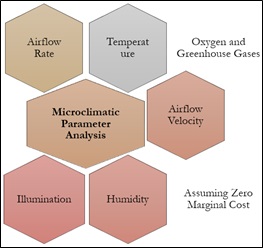Optimizing Livestock Microclimates: BES Models, Challenges, and Sustainable Solutions
Keywords:
Microclimate Conditions, Livestock Buildings, Airflow, Illumination, and Gas Content.Abstract
Efficient control of microclimate conditions in livestock buildings is crucial for sustainable livestock production. This paper explores the optimization of energy efficiency through measures such as minimizing energy consumption, adopting ecofriendly technologies, incorporating renewable energy sources, and analyzing economic parameters. Livestock production's impact on global food security is highlighted, emphasizing the importance of effective temperature control in optimizing production. The study delves into the energy consumption patterns in livestock buildings, particularly about heating and ventilation. The role of microclimatic parameters, categorized as physical, chemical, and biological, is crucial in ensuring favorable health conditions for animals. The study identifies a research gap in the existing literature regarding Building Energy Simulation (BES) models for cow housing, leading to the establishment of this study's goals and methodologies. The methodology involves defining the project scope, creating a logical framework, and conducting a comprehensive literature review. The evaluation of BES models for livestock housing is systematically carried out, covering various aspects such as model applications, validation techniques, and constraints. Findings include insights into the specific types of livestock housing considered, key journals publishing relevant works, and a chronological analysis of research output. The study identifies challenges and limitations surrounding BES models in livestock housing, emphasizing the need for standardized validation procedures for reliable and applicable simulation models. Microclimatic parameter analysis provides a detailed examination of sources influencing temperature, humidity, airflow, illumination, and gas content in livestock buildings. Building Performance Simulation (BPS) tools are discussed, highlighting their role in evaluating and analyzing buildings during design and retrofit phases. The study concludes with a focus on models for sustainable advancements in the cattle industry, emphasizing the role of BES models in integrating renewable energy sources and addressing environmental challenges. The paper provides a comprehensive overview of BES models for livestock housing, serving as a valuable reference for future research and contributing to the industry's resilience and sustainability.


















